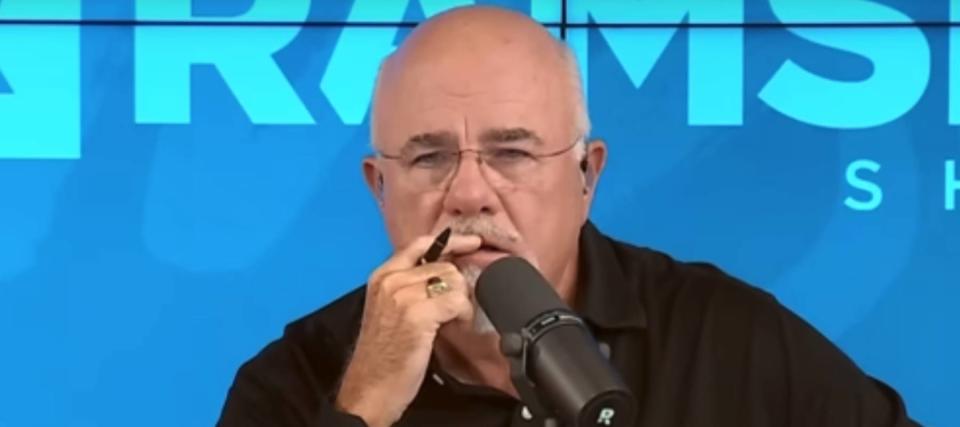‘We're talking beans and rice’: This North Carolina couple share a staggering $400K in student debt — here's what Dave Ramsey thinks these 'broke people with lots of degrees' should do

After sinking $400,000 into their physical therapy degrees, a young North Carolina couple is feeling so overstretched they’re at a breaking point.
With barely enough income to cover payments, they’re left as — in the words of one sharp-shooting finance personality — “broke people with lots of degrees.”
Don’t miss
Thanks to Jeff Bezos, you can now use $100 to cash in on prime real estate — without the headache of being a landlord. Here's how
Commercial real estate has outperformed the S&P 500 over 25 years. Here's how to diversify your portfolio without the headache of being a landlord
Rising prices are throwing off Americans' retirement plans — here’s how to get your savings back on track
Dave Ramsey dug into the details of the couple’s situation on a recent episode of his radio show. And while it might be a painful exercise, Ramsey says it’s still possible for them to rehabilitate and recover — but it may take a humble diet of beans, rice and ramen noodles.
America’s student debt burden
John, who lives in Asheville, is a first-year student studying physical therapy with $78,000 in student loan debt. He told Ramsey his fiancée has another $308,000 in student loans from Sallie Mae and Federal Student Aid.
Altogether, the couple is staring at an eye-watering $386,000 in student debt.
That’s significantly higher than the national student loan borrower's average balance, which, according to Federal Reserve data, is $35,210. Altogether, America’s student debt pile is worth $1.74 trillion.
This debt burden would be a lot lighter if borrowers saw a decent return on investment. If a university degree unlocked better jobs and higher wages, graduates wouldn’t have as much trouble managing interest payments. Unfortunately, that’s not the case. Many college graduates now say they regret shelling out for a four-year degree, according to a survey from earlier this year.
One major reason for that is how long it takes borrowers to work their way out of the hole. The average annual salary for a college graduate with a bachelor’s degree is $74,500, according to the Education Data Initiative. Most borrowers take 20 years to pay off their debt. Some never pay it off at all.
John and his fiancée are in a similar situation. She’s earning $75,000 a year before taxes as a physical therapist. He’s training to be a physical therapist too, so it’s likely he’ll earn a similar amount in a few years. Together, Ramsey estimates their future earnings are roughly $150,000 a year.
“That’s the shovel-to-hole ratio,” Ramsey says. “Your shovel is your income and the hole is $400K.” Fortunately, he believes there’s a way to dig out of this hole — and relatively soon.
Read more: Thanks to Jeff Bezos, you can now cash in on prime real estate — without the headache of being a landlord. Here's how
Digging out of a financial hole
Ramsey recommends extreme sacrifices to get rid of debt quickly. If they live on $50,000 and pay off $100,000 each year, it’ll take them four years to pay off their loans, he says. Of course, the loan repayment could be faster or slower, depending on their lifestyle choices and ability to generate more income.
Working overtime could deliver an extra $20,000 annually, Ramsey estimates. That puts the couple in a much better position to reduce their debt — and they can supercharge that by cutting back on expenses. “We’re talking beans and rice,” says Ramsey. “Tuna fish is for broke people. You’re broke people.”
Ramsey’s advice might sting, but it certainly makes sense on paper. And there are instances of people paying off debt rapidly by cutting their budget down to the bone. However, implementing such a plan is easier said than done. The personal savings rate in the U.S. is just 3.4%, while student loans for graduate degrees could have interest rates as high as 8%. In other words, the debt grows faster than people’s income or savings.
This is why a growing number of student loan borrowers feel trapped and the debt burden keeps ballooning every year. So John and his fiancée may well need to make extraordinary sacrifices — and hope for some good luck — to escape the crisis.
What to read next
Millions of Americans are in massive debt in the face of rising rates. Here's how to get your head above water ASAP
Rising prices are throwing off Americans' retirement plans — here’s how to get your savings back on track
The US dollar has lost 87% of its purchasing power since 1971 — invest in this stable asset before you lose your retirement fund
This article provides information only and should not be construed as advice. It is provided without warranty of any kind.